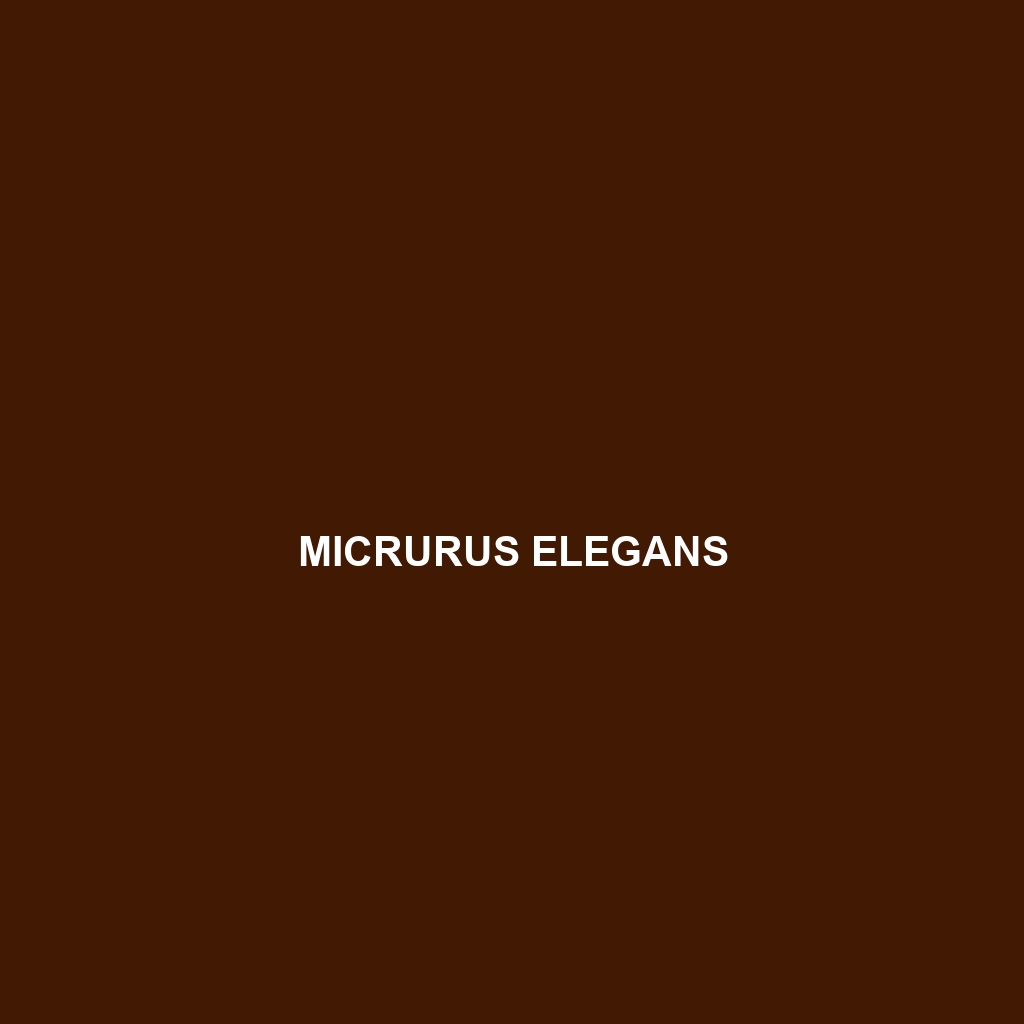Common Name
Micrurus elegans
Scientific Name
Micrurus elegans
Habitat
Micrurus elegans, commonly known as the elegant coral snake, is primarily found in a variety of habitats across Central and South America. This species favors humid regions, particularly thriving in rainforests and temperate forests. The snake is also known to inhabit savannas and occasionally can be spotted in areas near human habitation, although it is less common in urban settings. Preferring environments with abundant leaf litter, Micrurus elegans utilizes the forest floor as its main territory, which provides ample cover and hunting opportunities. The climate of its habitats generally ranges from tropical to subtropical, with high humidity and consistent rainfall supporting its ecological needs.
Physical Characteristics
Micrurus elegans exhibits a distinctive appearance that sets it apart from other species within its family. This species typically measures between 40 to 80 cm (16 to 31 inches) in length. A notable feature of the elegant coral snake is its vibrant coloration; it displays alternating bands of bright red, yellow, and black, with the red and black bands being broader than the yellow ones. This color pattern not only serves as a warning to potential predators but also enhances its camouflage among the brightly colored flora of its habitat. Its slender body shape, combined with a small and pointed head, further distinguishes it from other snakes, making it a fascinating subject for herpetologists and wildlife enthusiasts alike.
Behavior
The behavior of Micrurus elegans is intriguing, showcasing a mix of both solitary and curious tendencies. Primarily nocturnal, this snake exhibits activity during the twilight hours, which aids in avoiding daytime predators and human encounters. During mating season, males engage in elaborate courtship rituals that can attract females, where they display their vibrant colors and engage in physical interactions. This species is not known for migration but will utilize various microhabitats within its range throughout the year. Unlike many other snake species, Micrurus elegans is less aggressive but will defend itself vigorously if threatened. Its secretive nature and striking coloration make it a coveted sight for reptile enthusiasts in the wild.
Diet
Micrurus elegans is a carnivorous species, primarily feeding on small vertebrates, particularly other snakes, lizards, and occasionally small rodents. As a proficient hunter, it employs a method of ambush, relying on its exceptional camouflage to blend into the forest floor while waiting for prey. Its diet also includes a variety of small amphibians. The elegant coral snake possesses potent neurotoxic venom, which it uses effectively to immobilize prey before consumption. Due to its predatory nature, it plays a vital role in controlling the population of small species in its ecosystem.
Reproduction
The reproductive cycle of Micrurus elegans is typically seasonal, with mating occurring in the spring months. After a gestation period of approximately 60 to 70 days, females give birth to live young, usually producing between 3 to 12 offspring in a single litter. The young snakes are miniature versions of adults, inheriting the same bright coloration, which serves as a warning to potential predators. Parental care is minimal, as the mother leaves the young to fend for themselves immediately after birth. This reproductive strategy, common among many snake species, helps maximize the survival rate of the offspring by reducing competition within a limited habitat.
Conservation Status
As of now, Micrurus elegans is classified as a species of least concern by the International Union for Conservation of Nature (IUCN). While it enjoys a relatively stable population, it still faces threats from habitat loss due to deforestation and agricultural expansion. Conservation efforts focusing on habitat preservation and public education about the ecological importance of this species are crucial in maintaining its populations. Awareness campaigns can help mitigate human-wildlife conflicts, encouraging coexistence in areas where their habitats overlap.
Interesting Facts
Micrurus elegans has several interesting traits that enhance its allure among both scientists and reptile enthusiasts. One remarkable characteristic is its ability to go long periods without food, allowing it to survive in environments where prey availability fluctuates. Despite its venom potency, Micrurus elegans is not aggressive towards humans and rarely bites unless provoked. Additionally, their striking coloration serves as a deceptive mimicry: many non-venomous species have evolved similar color patterns to deter predators, showcasing an interesting aspect of evolutionary adaptation in reptiles.
Role in Ecosystem
Micrurus elegans plays a crucial role in its ecosystem, serving as both predator and prey. As a predator, it helps maintain the population of smaller reptiles and rodents, contributing to a balanced food web. It is also an important food source for larger predators, including birds of prey and larger snakes. The presence of Micrurus elegans indicates a healthy ecosystem, as it reflects the biodiversity of its environment. By controlling prey populations and serving as food for higher trophic levels, this species contributes significantly to the stability and health of its habitat.
